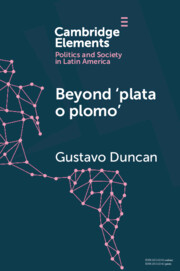Element contents
Beyond 'plata o plomo'
Published online by Cambridge University Press: 07 October 2022
Summary
- Type
- Element
- Information
- Online ISBN: 9781108893909Publisher: Cambridge University PressPrint publication: 06 October 2022
References
- 17
- Cited by



